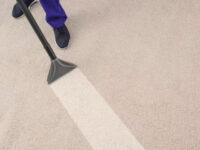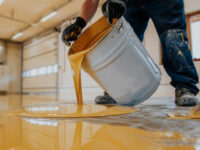Plumbing Faucets and Faucet Finishes
Plumbing involves the distribution of clean water and the removal of waste. This includes piping buried underground and above ground, as well as fixtures and appliances. It is essential to distinguish plumbing from process piping, which handles caustic, corrosive, and toxic chemicals.
Many plumbers use hot forging to make their faucets, which saves time and money by producing a near-net shape in three seconds. The finishing process then adds the desired aesthetics and functionality. Visit https://www.plumbing-express.com/ to learn more.
Faucets come in many sizes, styles, and finishes. When choosing a faucet, consider not only the look but also how it works. A faucet that functions well and is easy to repair will last longer than one that’s difficult to operate or requires constant maintenance.
The most common type of faucet is the cartridge or ball and disk faucet, which operates by using a small, circular cartridge with a valve seat to control water temperature and flow. The handle moves over the cartridge to adjust its direction and pressure. These are found mostly in kitchens and bathrooms, although they can be installed in any room where you need to control hot and cold water.
Often, a leaky faucet is the result of a worn or damaged component that needs to be replaced. The process of repairing a faucet is usually relatively straightforward, but it’s important to follow the instructions in the manual and to use proper safety equipment.
Before attempting to fix a leaking faucet, make sure that the water is turned off and that the pipes are completely dry. Next, remove the decorative cap from each handle. The screw in the center of the cap is typically a Phillips screw, so a standard screwdriver will work. Once the cap is removed, the handle will then come off easily. It’s a good idea to place the handle parts in order as they are removed, so they are organized for reinstallation.
After the handle is removed, you will need to gain access to the valve stem in order to replace it. Depending on the faucet type, this may require removing a retaining clip or nut that holds the valve in place. A pair of needle-nose pliers is a useful tool for taking out these items without damaging them. Once the stem is exposed, it’s a good idea to clean all of the parts to make sure that you are replacing any components that are worn or damaged.
Once you’ve removed the cartridge, you can either replace it or install cleaned neoprene seals in the base of the ceramic-disk cylinder. These can be purchased from your local hardware store, and it’s a good idea to have some plumber’s grease handy to help keep the new seals in place.
Materials
In the plumbing industry, a wide range of materials have been used for pipes and fittings. Plumbers must know which ones to use for each type of project in order to ensure that the finished product is safe and effective. For example, copper piping is one of the oldest and most reliable plumbing materials available. However, it is more expensive and difficult to install than other types of piping.
When it comes to residential plumbing, PVC, CPVC and copper are the most common pipe materials. Each of these is suitable for different applications, and each has its own unique advantages. PVC pipes are inexpensive and durable, making them a popular choice for toilets, sinks, tubs, showers and water supply lines. However, PVC is not suitable for hot water because it warps at high temperatures.
CPVC and PEX are two of the most common plumbing materials for hot water systems. These pipes are insulated, which makes them less prone to freezing and help prevent energy losses. PEX pipes are more flexible than PVC, and they can be bent to fit around corners or other obstacles. These pipes are also resistant to chemical degradation and corrosion.
Other plumbing materials include brass, polypropylene and ductile iron. Brass is often used in low-pressure systems. It is also highly recyclable and has good machinability. However, it is important to check that the alloy does not contain lead. Stainless steel plumbing pipes are extremely durable and have excellent machinability, but they can be costly.
Plastic pipes are becoming increasingly popular, especially for hot and cold potable water and sewage applications. Unlike copper pipes, they do not corrode or rust over time. However, it is important to check the quality of these pipes by checking for a “K” mark, which indicates that they have been kiln-tested.
Other plumbing materials include galvanized steel and cast iron, which are less common. Galvanized steel is prone to rusting and blockages, while cast iron is heavy and difficult to work with. Plumbers should always carry tools to deal with these old pipes, such as wrenches with varying handle and jaw head sizes and shapes. Plumber’s tape is also a valuable tool to have, as it seals threaded areas on pipes and fittings to avoid leaks.
Finishes
Faucet finishes are used to protect metal plumbing fixtures from corrosion and tarnishing. They can also add a touch of style to kitchens and bathrooms. Chrome is one of the most popular finishes, since it’s inexpensive and durable. It resists rust and easily wipes clean, but it can show water spots and fingerprints more than other finish options. Other choices include brushed nickel, which pairs well with both traditional and modern decor, and bronze, which complements rustic or country-style kitchens and baths. Many stores can special order faucets in a variety of finishes not stocked or displayed. Identifying a faucet’s finish can be done through pictures, the age of the fixture or the suffix on the model number. Cleaning instructions vary by finish. Harsh cleansers can damage a faucet’s finish, so it’s important to read the label carefully.
Installation
A plumbing system is a complex network of pipes that conveys water to and from a home or building. It includes water supply and waste removal systems. The plumbing industry involves installing, repairing, and maintaining these systems. It also includes constructing new buildings or structures that contain plumbing. It is a highly regulated trade. In most jurisdictions, plumbers must be licensed. To become a licensed plumber, an individual must complete a formal apprenticeship program and pass an examination. In addition, some jurisdictions require licensing for plumbers who work on gas plumbing systems.
A professional plumber is trained to understand the principles of gravity and pressure, as well as how water seeks its own level. They can use this knowledge to prevent leaks and other problems. Many plumbers are also skilled at interpreting blueprints and other design documents. This allows them to install plumbing systems that meet local codes and regulations.
Plumbing is distinguished from sewage systems, which are used to transport contaminated wastewater. However, a plumbing system may also contain elements of sewage systems, such as water closets and urinals. Plumbers must be able to work safely around these systems, as they often encounter human waste, which can carry infectious diseases such as cholera, typhoid, and hepatitis.
In addition, a plumbing system must be designed to handle the volume of water that is used in a household or commercial facility. This ensures that there is enough water to meet demand without causing a back-up or overflow. In addition, the plumbing system must be designed to accommodate future expansion and upgrades.
A good plumbing system should be easy to maintain and repair. This will reduce the risk of water damage and save money in the long run. To keep your plumbing system in top condition, you should have it inspected and maintained regularly by a qualified professional. A professional plumber can identify and fix problems before they cause major damage.
Plumbing is a vital service that is required in all residential and commercial buildings. It is essential for ensuring the safety and health of all occupants. Unsafe and unhealthy water can cause a variety of diseases, including cholera, typhoid, hepatitis, and polio. Proper plumbing can prevent these diseases by ensuring that clean drinking water is available, and that sewage is removed efficiently from the premises.





